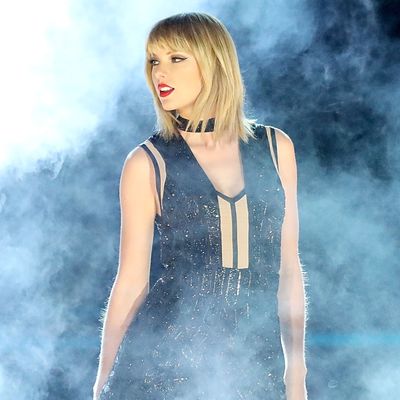
Despite it being only Tuesday, pop ultrastar and recent social-media recluse Taylor Swift has already blessed the masses by tweeting two short films centered on a snake, or snake-like entity, writhing in near total darkness while the visual feed glitches in and out of clarity a few times. Monday’s video was 10 seconds and today’s video is 20, but that’s not the only difference. The scales of the snake-thing today are more pronounced: You can tell more clearly that they’re rougher and more elevated than any real-world snake. It’s not much to go on, but that’s the point. Taylor Swift understands that power is, in large part, the power to keep people waiting. In much the same way that yesterday’s solar eclipse has more blinding potential than the sun undimmed, Swift’s self-effacement actually amplifies her star power. Reducing her online presence to near nothingness heightens the anticipation surrounding her next move.
Of course, there are limits to the suspense: It’s not like anyone doesn’t know the trail of clues will lead anywhere other than a new single and new album. But since fans and critics love to speculate about stars at least as much as they actually love stars, concealment makes for a canny, cost-efficient move, particularly for a celebrity who last made big news a year ago after being exposed as a snake, or snake-like entity, in the eyes of Kim Kardashian, her husband, their legions of fans, and the public in general. The best way to ride out any media controversy is to say nothing and wait for the news cycle to move on to the next frenzy; after an embarrassing unforced error involving a request to be excluded from the depiction of herself as deceptive and conniving, Swift, through simple silence, has actually exited said narrative long enough to reenter it on her own terms.
All eyes are on Taylor, but the question of what she’ll do next is less illuminating than the question of what she herself has been watching. Pressure builds bonds as much as it breaks them, and brand synergy has been key to Swift’s success ever since she named a single on her debut album after Tim McGraw. Much-publicized relationships with John Mayer, Calvin Harris, and others fit the model of business partnership just as well, as do musical collaborations with Kendrick Lamar and Ed Sheeran. (Not to mention Swift’s actual economic alliances with the likes of Apple and other firms.)
The example of Sheeran, himself something of an expert at tactical fusion, seems especially instructive at the moment: The British pop singer recently made the news not because of his music but because of his guest appearance as a Lannister soldier on Game of Thrones, by far the most talked-about TV show of the summer. One of the central plotlines of Game of Thrones features a blonde on a quest for revenge: If the rough, reptilian form in Swift’s videos looks familiar to viewers, it’s almost certainly because they’ve seen similar textures on Daenerys Targaryen’s three (now two) giant fire-breathing reptiles. It costs vast sums of money for a woman to be filmed riding a digitally generated dragon — the budget for a single episode of Thrones runs in the low eight figures. But Taylor Swift’s net worth, estimated at over a quarter-billion dollars, is surely such that she could easily afford a music video where the blonde queen, driven into obscurity with reptilian associations, returns to incinerate her myriad foes with a dragon. The conjunction of the hottest show on TV with the biggest active pop star would, as intended, eat up music coverage for a week, if not more; Taylor’s perceived sins would be purged away in a sea of white-hot flames. As intended, viewers are still literally in the dark regarding Taylor. It’s too early to confirm what she’s up to. But as on Game of Thrones, the safe bet, despite all setbacks, is still on the princess with dragons.

